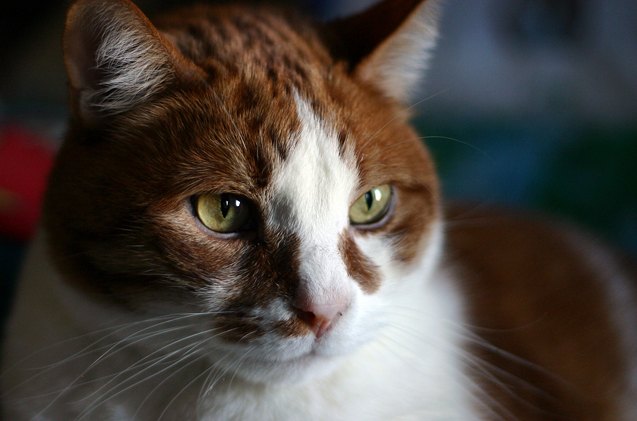Study Finds High-Pitched Noises Set Off Seizures In Cats

It’s called “Tom and Jerry syndrome”, but it isn’t nearly as funny as the ’60s cartoon show and has caused tremendous angst amongst pet parents of senior felines.
In fact, the number of complaints raised by cat owners who claimed their pets were having seizures in response to high-pitched sounds, caused a UK cat charity to contact veterinary specialists.
Related: 4 Basic First Aid Tips For Cat Emergencies
Apparently triggers as simple as crinkling tinfoil or clinking glass with a metal utensil were causing the felines to experience seizures. And it wasn’t just a handful of pet owners raising this concern; it was hundreds of cat owners from around the world who replied to the charity’s query regarding the odd behaviour. Most also stated their vets did not believe sound could be the trigger.
Enter the veterinary neurologists at Davies Veterinary Specialists in England, who teamed with a molecular neuroscientist and geneticist at the University College London School of Pharmacy to investigate the perplexing feline phenomenon.
Related: What Is FIV In Cats?
Guess what – it’s true! Data from almost 100 cats was reviewed including type of seizure, duration and what sound appeared to trigger it. It was discovered that like some humans, there is a form of seizure – known as audiogenic – caused by sound. In certain cats it could trigger non-convulsive seizures (zoning out), myoclonic seizures (brief muscle jerks) as well as full blown seizures (loss of consciousness and, muscles jerking for several minutes). So we really do know our fur kids and the study that reaffirmed pet parent claims was even published in the April 2015 Journal of Feline Medicine and Surgery.
Who is most susceptible? That would be older cats between 10 to 19 years with 15 being the typical age for onset. Beyond that, it occurred in pedigree breeds as well as the common house cat – though Birmans seemed to be more sensitive to the sounds.
The triggers? Sounds tested included crinkling tinfoil (82 cats), a metal spoon clanking on a ceramic food bowl (79 cats), clinking glass (72 cats), crinkling paper or plastic bags (71 cats), computer keyboard or mouse sounds (61 cats), jingling coins or keys (59 cats), hammering a nail (38 cats) and the clicking of an owner’s tongue (24 cats). But get this, to a lesser extent even a ringing cellphone, Velcro peeling or just you walking across a wooden floor in bare feet could set kitty off. Apparently, the louder the sound, the more intense the seizure.
So why the Tom and Jerry moniker? Apparently it was initially named for the cartoon character of Tom who responded to startling sounds with involuntary jerks. More officially, it’s called FARS (feline audiogenic reflex seizures) and researchers confirm future studies will focus on genetics and how to treat it – including use of the epilepsy medication levetiracetam.
Of course, having a household with cats that range from 6 to almost “sweet 16” I had to test the theory for myself. There’s been clinking glasses, a little tinfoil, scratching on glass, practically moon-walking across my wood floors in bare feet. The result of my experiment: nothing beyond some odd stares, then back to sleep, for my gang. Has high-pitch noises ever set off seizures in your cat?
[Source: Live Science]

Sharing space with three seriously judgy Schnoodles and a feline who prefers to be left alone. #LivingMyBestLife
More by Mary Simpson






















